As a tropical plant, lemongrass isn’t exactly suited to the chilly temperatures of winter in much of North America. When temperatures fall below 40ºF, it begins to suffer.
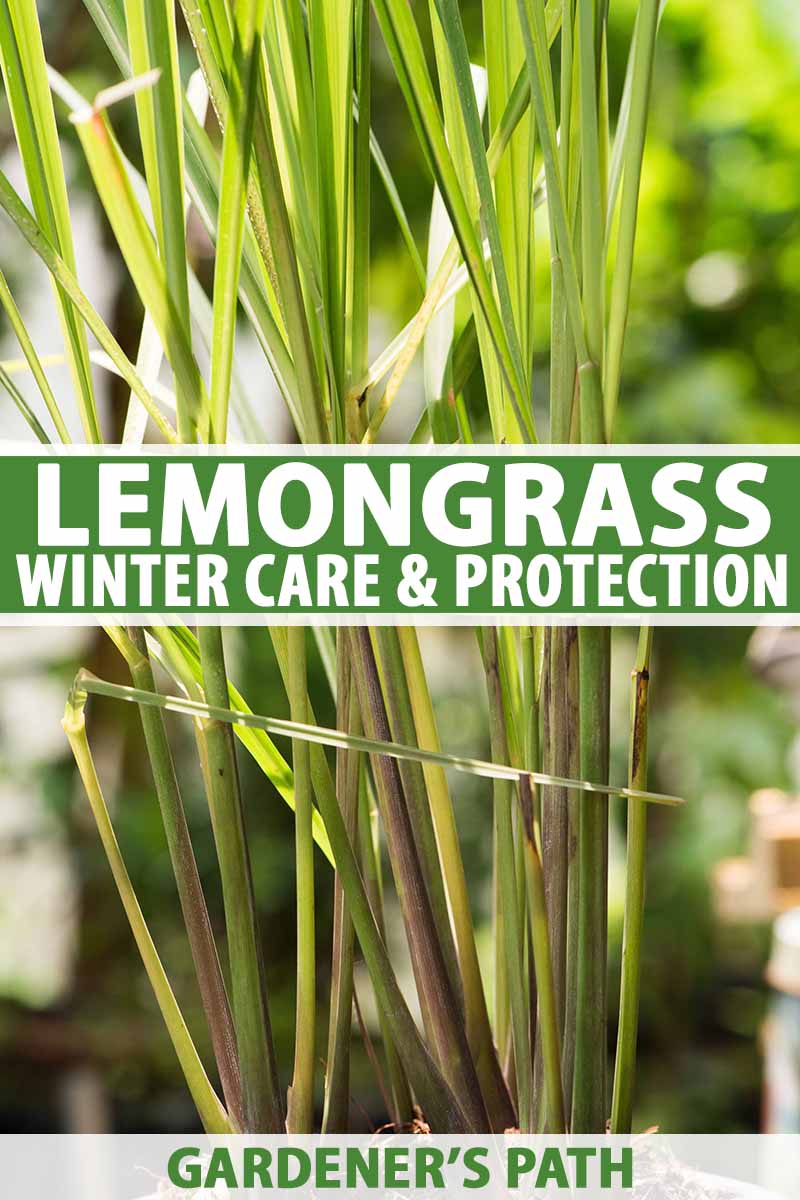
We link to vendors to help you find relevant products. If you buy from one of our links, we may earn a commission.
However, there are ways to help this herb survive the cold, and come back healthy and vigorous in spring. Continue reading to find out how to prepare your plants for winter.
How to Prepare For the Cold
Plant Hardiness Zones
If you’re growing lemongrass in your garden, you might be wondering what to do with it over the winter months. Due to its tropical origins, lemongrass can only survive the winter outside in the warmest areas of the US.
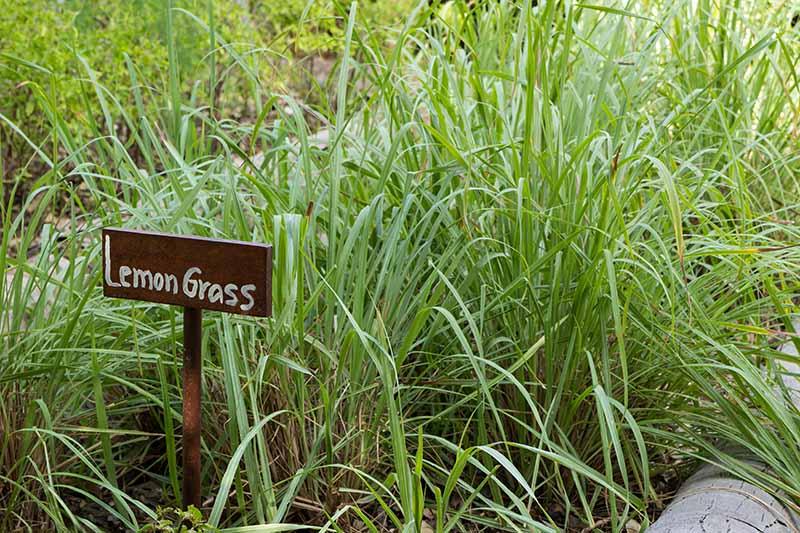
If you live in USDA Hardiness Zone 10 or 11, it’s safe to leave it outside year-round. However, this only applies to growers in Florida, southern Texas, southern Arizona, and southern California.
If you live in Zone 8 or below, you’ll need to bring your plants inside during the colder months or they’ll end up dying. In Zone 9, it’s best to bring them indoors, but with additional protection you should be able to overwinter them outside.
Protecting Outdoor Plants
If you’re in Zone 9, your lemongrass can survive the winter outdoors as long as you provide adequate protection from the cold.
Floating row covers can act almost like a blanket, covering and keeping plants warm when temperatures plummet.

The first step in preparing for the cold months is to prune your lemongrass. Using gardening shears, remove the leaves and cut the stalks back until they are six to twelve inches tall.
Then drape the material over the plant.
Make sure to hold down the sides using rocks, bricks, or other weights to make a snug cover. Gather each end and weigh down to prevent cold air from blowing in.
Divide, Prune, and Pot
If you live in Zone 8 or below, you’ll need to bring your herbs inside during the winter where they will go dormant.
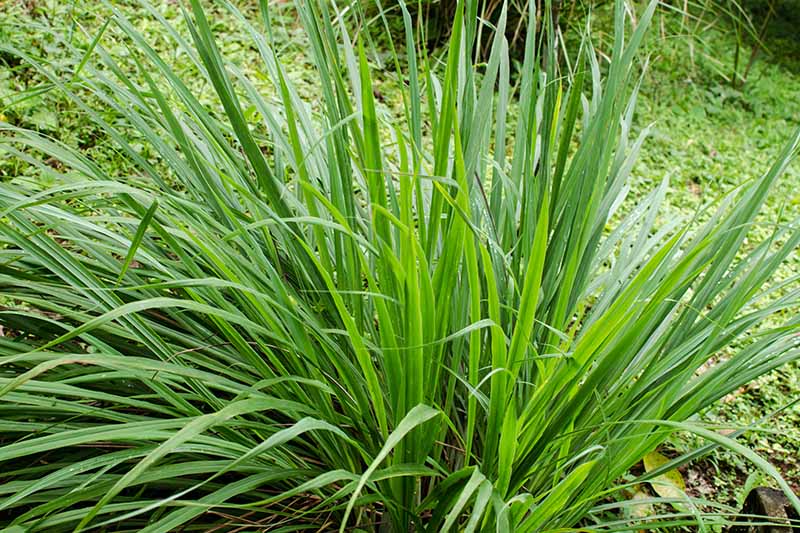
When they are dormant, they can survive the cold, dark days. Think of dormant plants like hibernating bears; they both take it easy in the winter so they can kick into action in the spring.
If you’re bringing them inside for the winter, you’ll want to start preparing your lemongrass when nighttime temperatures start to drop below 45ºF.
The first step to getting this grass for life indoors is to divide it.
First, use a shovel to dig up the whole plant. Make sure to dig at least two inches either side of the base of the stem in order to preserve the roots.

After you’ve dug it up, use your hands to carefully separate each lemongrass clump into sections of two to four stalks. Make sure each section contains roots.
If it contains less than four stalks, you don’t need to divide it.
After dividing, use scissors or pruning shears to cut the leaves and stalks back so they are 6-12 inches tall.
This haircut helps the maintain moisture in the upcoming months by decreasing the surface area it uses to respire. With fewer leaves, less water evaporates from the leaves.
For more information on dividing perennials see our full guide here.

The next step is to pot them up.
Choose a container that is at least six inches wide and six inches deep. Fill the container with a mix of soil and compost, and plant the stalks 1-2 inches deep.
If placing more than one section of stalks into the same container, space them at least one inch apart.
Keeping Plants Indoors
Once your herbs are in their pots, you need to find a proper location for them to spend the next few months.
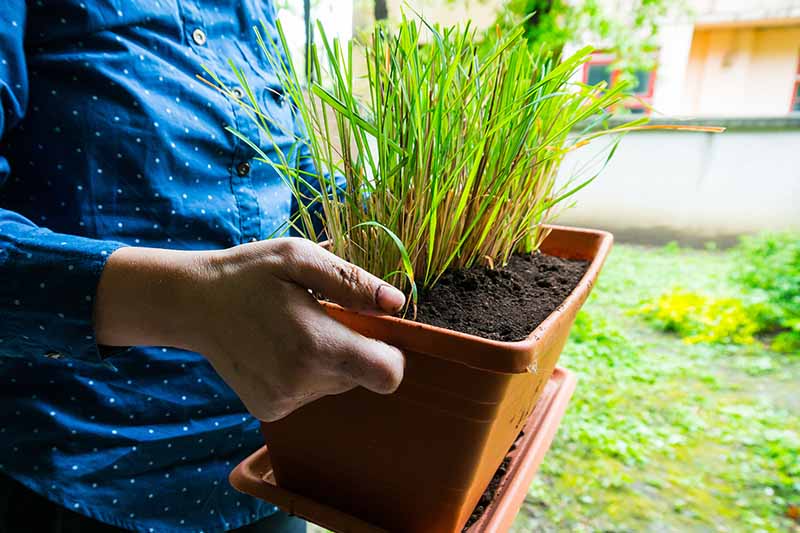
Since overwintering lemongrass is going to be dormant, don’t expect growth or harvests over the cooler months.
To maintain dormancy, place the pots in a cool, dimly lit area. These conditions will keep it alive, but not actually growing. A garage, basement, or cellar kept at 50-60ºF are good options.
Water your lemongrass about once a month over the winter while it’s dormant. Only water sparingly, when the soil is dry at the top; the goal is to provide just enough water for the dormant plant to survive.
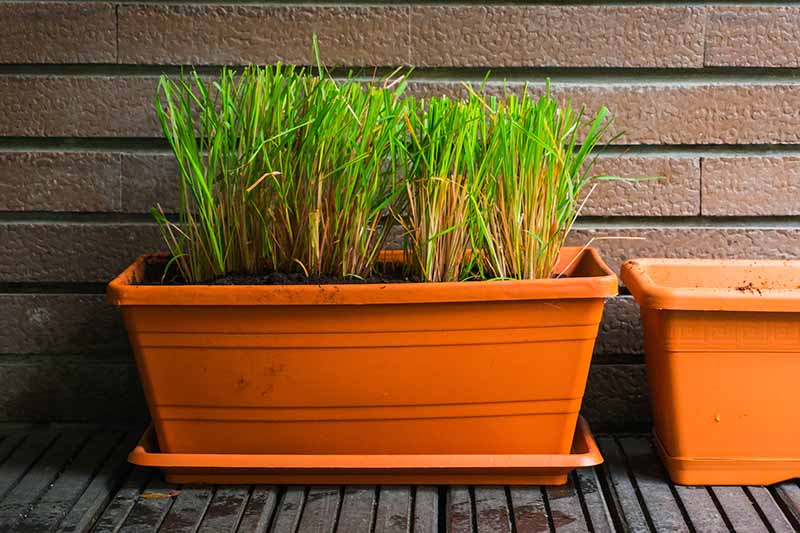
If you don’t have a cool area, they can be kept in a warmer environment. The warmth will likely prevent them from going fully dormant, although growth will slow dramatically.
In warm space (above 60ºF), plants will try to continue to grow throughout the winter. In this case try to provide your lemongrass with plenty of light by placing it near a south-facing window.
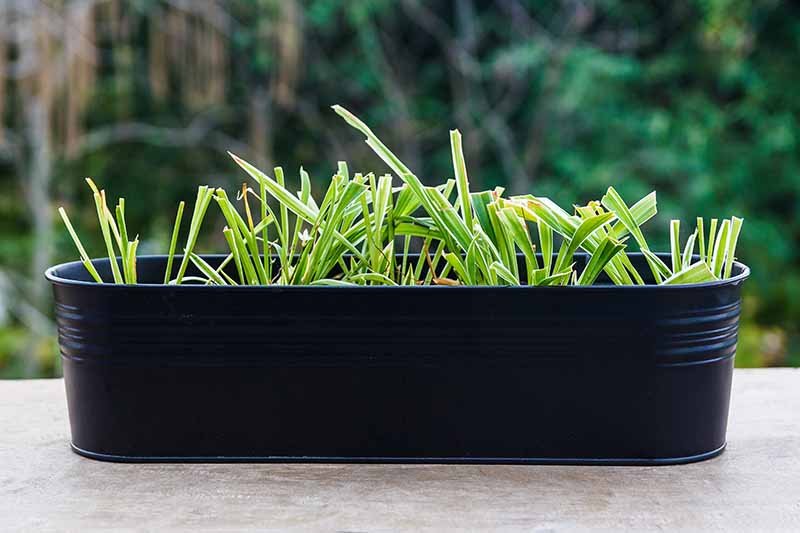
If you don’t have a window with sufficient light, you can provide artificial light via a grow light. A simple light-bulb will do – just look for one labeled “cool white.”
If you want your plant to continue growing, make sure it gets at least ten hours of natural or artificial light each day. Water twice a week to keep the soil moist but not waterlogged.
Preparing for Spring
Once daytime temperatures are regularly in the 50s, move your pots to a sunny and warm location indoors. Start watering them with about a quarter of an inch two to three times a week.
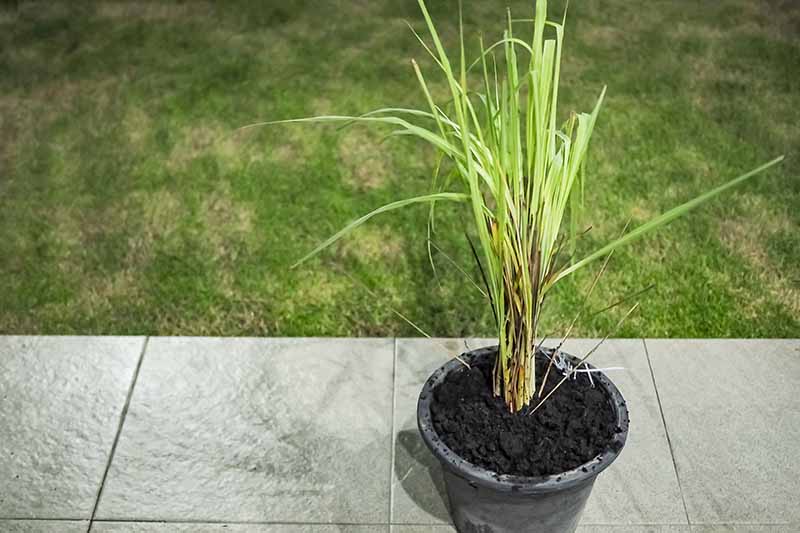
After two weeks of acclimation to light and warmth, you can begin moving the containers outside during the day. Be sure to bring them inside if the temperature dips to 40ºF or below.
Once nighttime temperatures remain reliably above 40ºF, you can leave your them outside. At this point, you can also transplant them back into your garden if you wish.
While you can transplant your herbs back into their previous location, it’s best to place them somewhere new. By practicing crop rotation, you help prevent problems with disease, pests, and nutrient-deficiency in the soil.
Wherever you end up transplanting, make sure the soil is well-aerated. Plant clumps of one to four stalks, with one to two feet between each clump.
Will My Lemongrass Survive Winter?
If you follow the steps above, your lemongrass will survive the winter. Even if you don’t make it to the tropics yourself, you’ll have a reminder of the warmth that is to come.
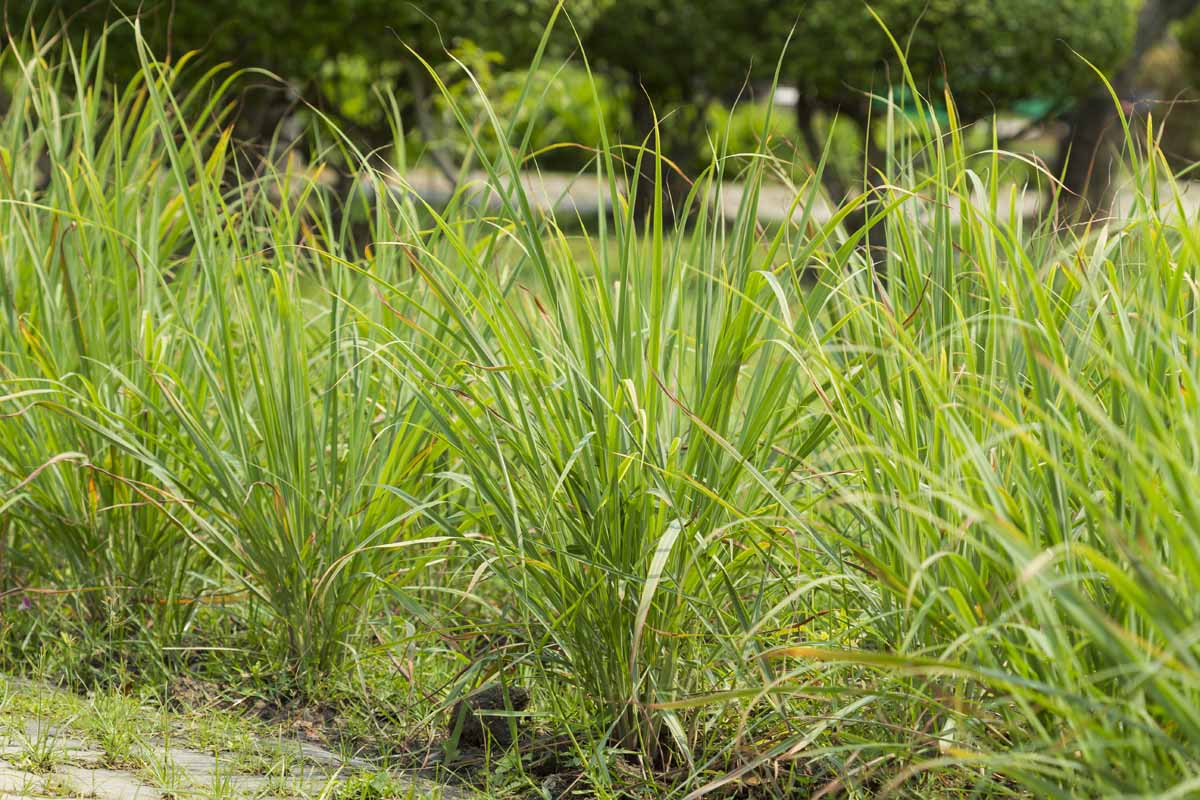
If you have any questions about how to prepare this herb for the colder weather, please comment below.
And to learn more about tropical plants, check out these articles:
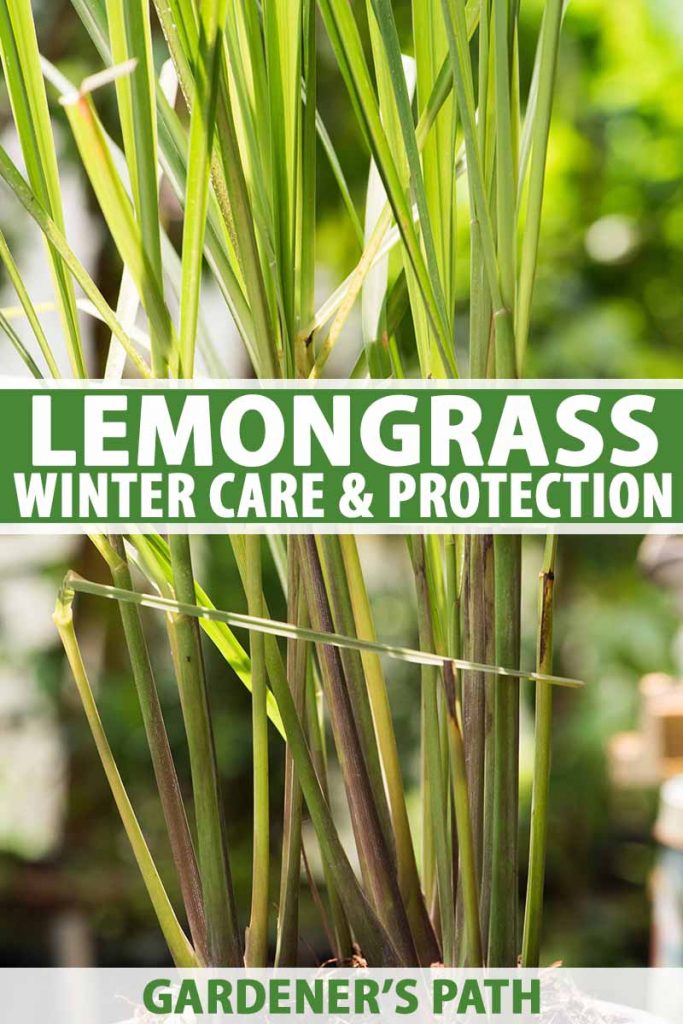

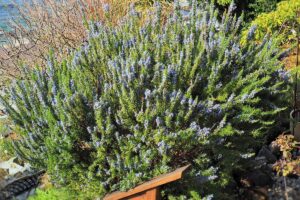
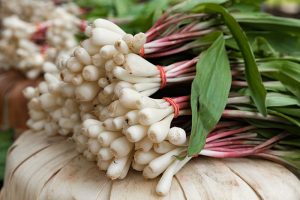
Is it possible to create a new lemongrass genes that will survive winter? How does one pollenate lemongrass?
Lemongrass is a tropical plant, so it would be difficult to hybridize one that is truly winter hardy. However, seeds saved over multiple generations from the same region do tend to develop qualities that are uniquely suited to their growing zone. If you live in a location with mild winters, and you have plenty of time for experimentation, you might like to give this a try. The flowers are typically wind pollinated and they are monoecious, meaning they have both male and female parts. You could try keeping your plants isolated and pollinating them by hand for the purpose of… Read more »
Hi there! Thanks for all this great info! I’m in NY and will be bringing my lemongrass plants in for the winter. I’ll be cutting them back and keeping them on a shelf in the hallway by the balcony door. There is a radiator across from where they’ll be and a roof access hatch above them. I’m thinking the temp will be above 50-60 degrees in this location so will need to give them the light they’ll need. I see you say you can use a regular lightbulb as long as it’s a cool white one. Does this mean I… Read more »
White LEDs can work as grow lights, since they provide mix of red, blue, and other wavelengths of light that plants will appreciate. But the output of regular LED light bulbs like you’d use to light your house don’t typically provide enough power for the job, so grow lights are recommended. Grow lights usually produce a significantly higher output. Unfortunately, I don’t think a 60-watt bulb will do much for your plants if your aim is to grow them year-round indoors, but for winter dormancy in New York you actually want to keep them in a cool, dimly lit location… Read more »
hi Briana
My question : I have lemongrass growing in pots and in the ground. I will be bringing the pots in but can I dig up the ones in the ground and re-plant them in pots? Will they survive? I started growing them not for consumption but because the plants look good in the yard.
Thank you!
Hi Jun,
Yes you can absolutely dig them up and plant them in pots. Depending on the size of your plants, this is also a good time to divide them. You can then replant in your garden in spring.
thank you!!
I see you mention seeds from the lemongrass. I assume growing from seed is much like growing anything from seed. But if I have a plant, how do I harvest seed from it?
Hello Julie. Lemongrass does produce flowers and seeds when it grows outdoors in the tropics, but rarely flowers in cooler climates.
Even if you’re growing yours in Zones 10 and 11, where it’s winter hardy, it’s tough to grow from seed.
I would recommend dividing the plant you have to propagate new ones, not relying on flowers or planting from seed.
The directions for dividing are outlined above. Good luck with the project!
It’s October, do I cut them?
Based on the article I will begin to cut mine as the the weather forcast revealed that temps in my area will begin dropping below 45 degrees later this week. So yes trim them and bring inside.
My lemongrass plants are in pots. Do I need to trim them if I am bringing them into a heated sunroom? They will get plenty of light.
Hello Enola S Pickard. They should be just fine making the move from the outdoors into a warm sunroom without clipping, as long as they’ll get that 10 hours of sunlight specified in this coverage. They’ll need more water than the ones that are just coming indoors to be dormant until spring, too. To be on the safe side, you might want to go ahead and divide, clip, and repot a few as well. If any of the potted lemongrass have more than four stalks, they’re big enough to prune and divide. I hope it goes well for you, whatever… Read more »
This was so helpful! I am moving back to Maryland from a short stay in Texas. I was wondering if I could bring my lemongrass with me and this answered so many of my questions and ones I didn’t know I had!
Great article!
Wendie V.
Thanks for reading, Wendie V.
I kept my lemongrass in pots all summer and cut them back to about 7 inches. I did not divide them. Do I need to go back and divide them or can I just leave them in the same pot?
Lemongrass can fill containers quickly, and spring is usually the best time for dividing. But it can also help to divide plants growing in the ground before potting them up to bring inside for the winter. Since yours are already growing in containers, there’s no need to worry about dividing now. But it’s something you may want to consider when active growth begins again next season! Find more tips in our comprehensive guide to growing lemongrass.
Hi my lemongrass plant has almost completely dried out… after bringing it in for the winter in Buffalo. It looks dead but could it be dormant?
Hello, Jessica! I’m worried that your lemongrass didn’t get enough water to keep it alive, or that you might not have gotten it inside ahead of the colder temperatures. There’s no harm in trying to water it lightly now and seeing if it comes back in the spring, but I wouldn’t be too optimistic. I’m hoping you can get started with another plant, though. Our guide here has plenty of tips for growing and caring for lemongrass, including some sources for buying plants or seeds for this spring. Good luck, whether your old plant makes a comeback or you start… Read more »